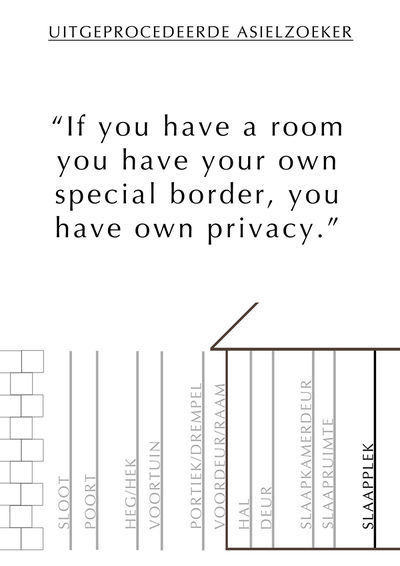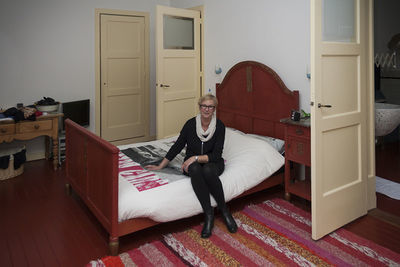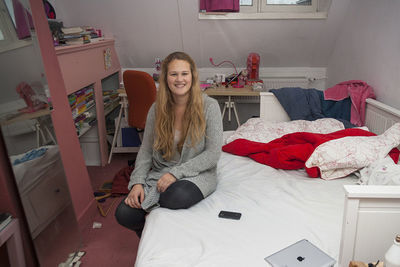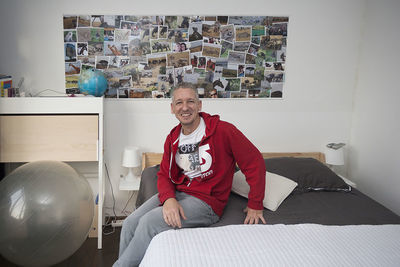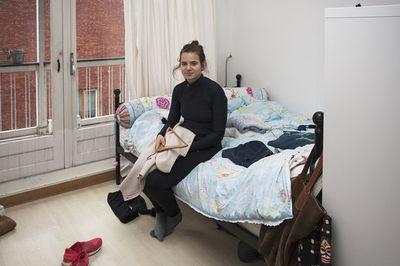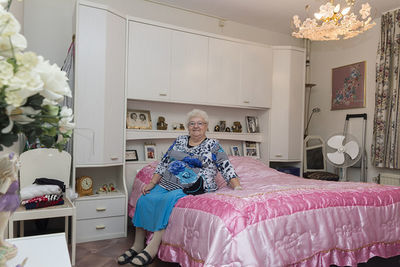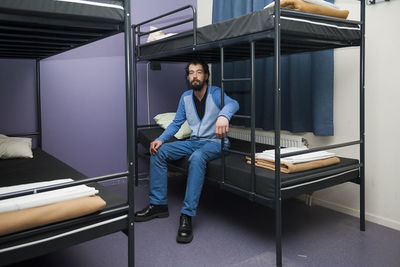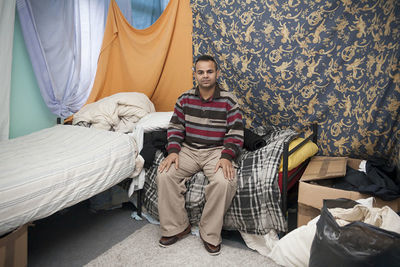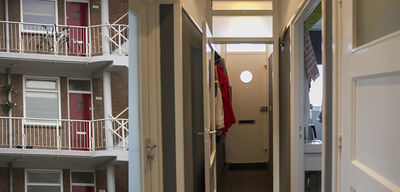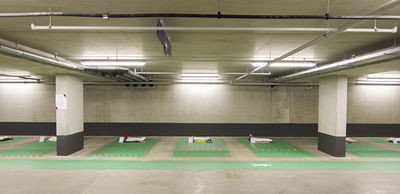Difference between revisions of "This is my border this is my space"
(Created page with "Authors: Liza Koch and Lou Muuse Consider how many doors do you have to pass from the street till you get to your bedroom? Every door is an opening to a different space; it...") |
|||
| Line 1: | Line 1: | ||
Authors: Liza Koch and Lou Muuse | Authors: Liza Koch and Lou Muuse | ||
| − | Consider how many doors | + | Consider how many doors you have to pass through from the street to your bedroom. Every door is an opening to a different space; it’s one step closer to your most private area: your bed. |
| − | + | In our project in the minor Cultural Diversity, we visualised territorial behaviour from the front yard to the bunk bed. We came up with six different income categories by defining their private borders. Most of the time the size of your private space is associated with affluence. The lower the financial resources you have, the less space you have. The space you have is divided into different zones leading to the ultimate private spot: the bed. | |
[[File:bijlage1.jpg|400px|Quote villa resident & zones between public space and private bedroom, with in bold his private space]] | [[File:bijlage1.jpg|400px|Quote villa resident & zones between public space and private bedroom, with in bold his private space]] | ||
| Line 9: | Line 9: | ||
[[File:bijlage7.jpg|400px|Quote rejected asylum seeker & zones between public space and private bedroom, with in bold his private space]] | [[File:bijlage7.jpg|400px|Quote rejected asylum seeker & zones between public space and private bedroom, with in bold his private space]] | ||
| − | The need for privacy is universal yet individually diverse. And over the years much has changed in how people interact with space. Today, in western culture, the bathroom and toilet are an intimate place, but this wasn’t always the case. | + | The need for privacy is universal yet individually diverse. And over the years much has changed in how people interact with space. Today, in western culture, the bathroom and toilet are an intimate place, but this wasn’t always the case. In other cultures these spaces may be experienced as less intimate. In contradiction to the toilet and bathroom, the bedroom has never changed in terms of intimacy. The sexual meaning has always been the same and therefore this space is always shielded, visible or invisible. The most effective way to create some kind of privacy is to obscure the view. Visibility can be removed by very primitive means, for example by pulling a blanket over your head or hanging a cloth or curtain. For this project we broke through different boundaries and photographed the individuals in their most intimate place in their residence: their beds. |
[[File:_MG_4977.jpg|400px|Free standing house]] | [[File:_MG_4977.jpg|400px|Free standing house]] | ||
| Line 31: | Line 31: | ||
[[File:_MG_9727.jpg|400px|Border made of suitcases]] | [[File:_MG_9727.jpg|400px|Border made of suitcases]] | ||
| − | [[File:3Jericholaan_wiki.jpg|400px| | + | [[File:3Jericholaan_wiki.jpg|400px|Private border of a row house without front garden from two sides]] |
[[File:4appartementencomplexbinnenbuiten_wiki.jpg|400px|Private border apartment complex from two sides]] | [[File:4appartementencomplexbinnenbuiten_wiki.jpg|400px|Private border apartment complex from two sides]] | ||
Revision as of 15:31, 30 January 2015
Authors: Liza Koch and Lou Muuse
Consider how many doors you have to pass through from the street to your bedroom. Every door is an opening to a different space; it’s one step closer to your most private area: your bed.
In our project in the minor Cultural Diversity, we visualised territorial behaviour from the front yard to the bunk bed. We came up with six different income categories by defining their private borders. Most of the time the size of your private space is associated with affluence. The lower the financial resources you have, the less space you have. The space you have is divided into different zones leading to the ultimate private spot: the bed.
The need for privacy is universal yet individually diverse. And over the years much has changed in how people interact with space. Today, in western culture, the bathroom and toilet are an intimate place, but this wasn’t always the case. In other cultures these spaces may be experienced as less intimate. In contradiction to the toilet and bathroom, the bedroom has never changed in terms of intimacy. The sexual meaning has always been the same and therefore this space is always shielded, visible or invisible. The most effective way to create some kind of privacy is to obscure the view. Visibility can be removed by very primitive means, for example by pulling a blanket over your head or hanging a cloth or curtain. For this project we broke through different boundaries and photographed the individuals in their most intimate place in their residence: their beds.
A project by Liza Koch and Lou Muuse.
Both studying at the Willem de Kooning Academy, with a minor in Cultural Diversity.

